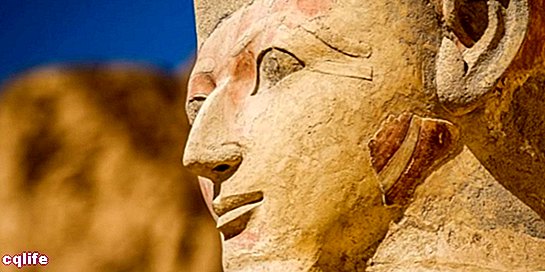- What is society?
- Origin of society
- Company characteristics
- Animal societies
- Human society
- Society and State
- Culture in society
We explain what society is, its origin, characteristics and relationship with culture and the State. Also, human and animal societies.

What is society?
"Society" is a broad term, by which it is understood a set of individuals who live together under rules common. Under this definition, the first one offered by the Dictionary of the Royal Spanish Academy, whether a country, a people or a community, like a honeycomb of bees or a business organization, can constitute examples of companies.
The term society comes from the Latin societas, derived from the voice socius, which translates "ally" or "companion." That is, the central feature in the idea of society has to do with the cooperation, that is, with being on the same side.
This does not mean that societies reign in perfect order, or that they are utopian communities, far from it. Human society, for example, is a constant source of struggles and tensions between the elements that wish to shape or order it.
On the other hand, the term society also has much more specific uses, especially in the legal, political or business sphere, such as:
- Civil society. Term that refers to the total citizenship of a country, considered as a set of independent actors of the Condition.
- Anonymous society. Also called "anonymous company", it is a form of business organization constituted by Actions, in which the latter represent a capital.
- Conjugal society. Legal figure that is constituted through the marriage and who manages the assets and capital of the couple.
- Cooperative Society. Producer organization form, merchants or consumers, which are governed by criteria of common utility to all.
Origin of society
Society exists in practice since the emergence of the most complex life. To the extent that some individuals sought protection and stability in life together, they formed swarms, colonies, or other forms of organization, some very primitive and others more socially developed.
In the case of human society, it has existed since the beginning of our species, although initially it was conformed more horizontally and focused on the survival of minimal family or inter-family units, such as tribes. As time passed, they became larger and more complex, developing new modes of organization, production and exchange.
Company characteristics
In general terms, the characteristics of the companies are:
- They are made up of a variable number of individuals, who show a minimum degree of communication and organization.
- They often have hierarchies, that is, internal orders that consist of the division of tasks and that assign some individuals central places above others.
- They are oriented towards production and growth, through the satisfaction of the common needs of all individuals.
- They also seek to sustain the processes and mechanisms that guarantee their perpetuity in the weather, that is, its reproduction. This does not mean that they remain unchanged, but quite the opposite: they change over time.
Animal societies

Animal societies are understood to be those that involve non-human individuals. They are composed according to various modes of organization.
They generally tend to the mutual defense of predators, the feeding shared and organizing the reproduction. However, unlike human societies, none of them has a culture.
Examples of animal societies are:
- Bee hives, anthills and termite nests.
- The underground nests of moles.
- The herds of lions, Wolves and other group predators.
- Chimpanzee communities.
Human society
Human society is the way in which humans have organized ourselves to jointly meet our needs. Unlike animal societies, ours usually have very high levels of organization and complexity, and are accompanied by their own culture, which often allows the identification of individuals belonging to a society.
Human society emerged as a form of tribal community, sharing its resources and seeking protection from the elements and potential predators. But thanks to language and to cultural and technological development, what were initially human tribes or hordes, managed to integrate and radically modify their ways of life.
The members of the society were linked through a common culture, based on founding stories and a sense of belonging. Activities such as the emergence of farming also collaborated in their cohesion with each other and with the geography in which they lived.
This path led to the abandonment of the nomadic life of the hunter-gatherers. Finally the cities, political hierarchies, nations and the religions, as human society fostered the transmission of knowledge from one generation to the next.
Society and State

Today it is difficult for us to imagine society without the existence of a State that governs and administers it. Since, although these two concepts refer to different things, it is also true that they are closely linked.
In the prehistory, the first societies did not have a State, that is, they did not have institutions, nor permanent powers. They were based on minimal and communal forms of organization, since the existence of individuals was entirely dedicated to survival.
However, all that changed with the Neolithic Revolution and the emergence of the first cities, around 6,000 years ago. It was then that agriculture allowed to generate enough food for those who worked the land and to support those who, from then on, would dedicate themselves to other activities: researching and educating, practicing religion or, also, managing.
Once the sedentary life is assumed, the military defense and the management of production became social necessities. Thus were born the first States, generally monarchical and religious, in which a military and / or religious elite ruled the social base of workers agricultural and artisans.
Later, new forms of organization emerged from the hand of great technological changes that allowed new forms of production, and the State changed along with societies. Nowadays, there are practically no stateless societies.
Culture in society
Normally, we refer to "culture”As the set of forms of life and expression of a society, which are inherited to the new generations as traditions.
Culture encompasses religious forms, founding stories, rites, celebrations and folklore, social identity, moral values, language and artistic expression, among other elements that, taken together, characterize and distinguish a society. In fact, no human society is the same as another, thanks to the cultural complexity typical of our species.
